Do you love the smell of the freshly brewed espresso the first thing when you wake up but an espresso machine is too much for your budget?
Then it’s time to learn how to make espresso on the stove.
While the process is not much like that of a real espresso machine, it is very simple to understand. Keep reading as we covered everything from the 0rigin of the stovetop brewers to how they work, and finally how to make it on the stove. You will also find out if and how the stovetop surface affects the brewing process and results.
IN THIS ARTICLE:
Is Stovetop Espresso Real Espresso?
Yes, and no. To clarify, real espresso is extracted using highly pressurized water at about 15 to 19 bars, and for this, you need an espresso machine. A stovetop espresso maker uses only 2 to 3 bars of pressure to create the beverage. So, technically you are not getting a real espresso, but, this is the closest you can get to it without a machine. A stovetop espresso maker provides a much richer and more flavorful brew than a regular coffee maker but is lighter than an espresso machine.
How Do You Make Espresso With No Machine?
The solution is something called Moka pot, which is a name for the stovetop espresso brewer. It was invented in 1933 by two Italian inventors, Alfonso Bialetti and Luigi di Ponti. They patented a Moka express as an aluminum, pressure-driven stovetop espresso maker. It became popular throughout Europe within a few decades and is, to this day, the most popular stovetop espresso brewing system almost every Italian household owns.
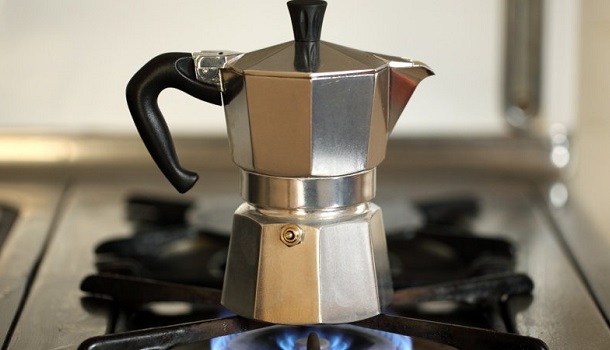

How Does A Moka Pot Work?
You might think that a Moka pot is a complicated brewer, but here is how it works:
- the pot itself consists of a bottom water chamber a filter basket for your coffee grounds and a top chamber that holds the brewed coffee
- once you place the pot on a heat source the water in the bottom chamber starts to boil and it creates steam inside the chamber
- the pressurized steam travels up through the coffee grounds inside the filter basket and then up to the top chamber as a dense coffee brew
Size Is Important
It is worth knowing that a Moka pot should be used to its complete volume with every use. What this means is that you can’t get a 6-cup Moka pot and brew only 3 cups as the pot will not work properly. You need to fill the water chamber to the safety valve for it to work the way it is supposed to. This is also true for the coffee filter basket (it needs to be full). For this reason, you want to be sure that you get the pot size you need. A 3-cup Moka pot is the most common one but you can find them in different sizes including:
- 1 cup
- 3 cups
- 6 cups
- 9 cups
- 12 cups
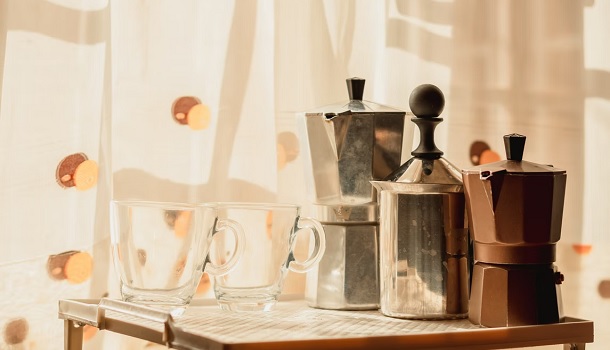

How Long Does It Take To Make Espresso On The Stove?
Generally, Moka pots need about 5 minutes to brew coffee. However, this refers only to the brewing process itself. If you take into consideration the complete preparation time that includes grinding your coffee beans and adding water and coffee to the pot, it will take you about 10 to 15 minutes to get the coffee brew. We did not include the time you need to clean the Moka pot afterward in this time frame so you can add 2 to 3 minutes to the process.
Does The Brewer’s Size Affect The Duration?
Yes, it does. A mini 1-cup pot uses less water and can complete the process faster (in about 3 minutes). A larger 12-cup pot might need an additional 2 to 3 minutes to do the same.
Will You Get The Espresso Crema?
Unfortunately no. We would say that this is the only downside of using a Moka pot. It provides you with a certain crema, but it is not the same as that of an espresso machine with the perfect aerated texture.
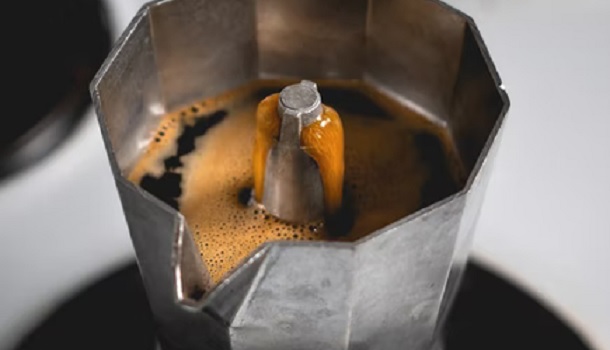

Is Moka Pot The Same As A Percolator?
Although both appliances are made for stovetop use, they are not the same. As said, a Moka pot uses the pressurized steam to brew coffee whereas a percolator brews coffee using gravity. Additionally, a Moka pot is made to produce smaller but flavorful coffee batches. In contrast, the percolator provides a large batch of coffee at once but it can not achieve the intense flavor most coffee aficionados love.
Step-By-Step To A Perfect Brew
Here are some steps you can follow to achieve the best coffee brew using a stovetop espresso maker:
- Prepare your Moka pot – you want to disassemble it into its 3 separate parts including the bottom water chamber, the filter basket, and the top brew chamber.
- Grind your favorite coffee beans – for a Moka pot you should use a medium-fine to the fine setting. The espresso-fine grind you usually need to brew espresso is not the best choice for a stovetop brewer as it can clog up the filter and cause leak issues.
- Add water to the bottom chamber – to get the best brew flavor you should use filtered water. Make sure that you fill up the chamber up to a safety valve and not an inch higher.
- Now, add your coffee grounds into the filter basket – use the coffee grounds you freshly ground for the brew and fill up the filter basket to make sure that it is full.
- Assemble the brewer – place the filter basket onto the water chamber and then screw the top chamber onto it.
- Place the Moka pot on the stove – once you have everything in place it is time to put the pot on the stove. Make sure that you leave the lid open to ensure that you can observe the brewing process and see when it is done. The coffee will start to drip out of the small chimney in the middle of the brewer. The process is done once you notice that the chimney is starting to spurt.
Additional Tips That Might Come In Handy
Here are some additional tips you might find helpful when brewing Moka pot coffee:
- use a conical burr grinder to grind coffee beans – this is because it does not heat up, meaning, it won’t damage the quality of your grounds
- if you want to speed up the brewing process you can heat the water in an electric kettle before adding it to the water chamber
- always keep the pot on the medium heat so that the flames can not reach the sides of the pot (otherwise the plastic handle might heat up or even start to melt)
- when possible, brew coffee on a gas stovetop burner – it is the best option because you have complete control over the heat. With electric burners, you can not control the heat variations as well.
What Kind Of Coffee Should You Use?
As is the case with “real” espresso, you should also use dark roast coffee beans for the Moka pot. That way you will get the most authentic brewing results.
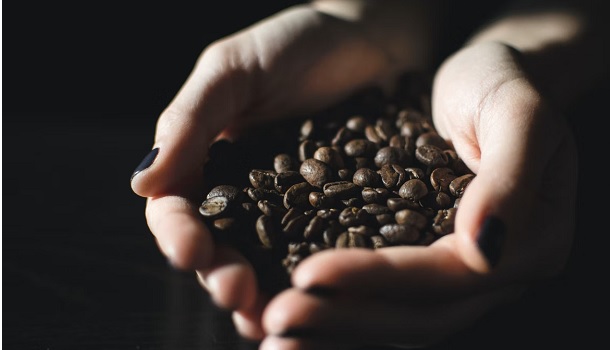

Can You Use Regular Ground Coffee?
Well, you can, but we do now recommend this. This is because the “regular” coffee is made for use in drip brewers. Espresso has a much more intense flavor than drip coffee and therefore you should use the same coffee beans you would for an espresso machine.
Can You Make A Latte Using A Stovetop Espresso Maker?
You can, but not the entire process. Use a stovetop brewer to make coffee following the steps above. Once the brewing process is done, pour the coffee until your cup is half full. At this point, heat some milk in a stovetop pot, froth it using a manual frothing wand, and pour the milk until your cup is full. If you don’t have a frothing wand you can use a Mason jar to shake the milk or try another method.
What If You Do Not Have A Moka Pot?
Moka pots are relatively inexpensive brewers so the best advice we can give you is to get one. Until you do, you can try and brew coffee in a regular pot. Keep in mind that this method does not provide anywhere similar results, but t can come in handy when you crave a cup of coffee and you don’t have any other options:
- Add 1 to 2 cups of water into the pot.
- Place it atop a stovetop burner and wait for the water to start boiling.
- As you wait grind the coffee beans you will use. It is best to do this freshly when you want to brew coffee – that way you will get the best flavor.
- Once the water boils, remove the pot from the stove and add your coffee grounds.
- Now, leave the coffee to steep for about 4 to 5 minutes so it releases all the flavors.
- Once the time is up, you can pour yourself a cup of espresso. It is best to do this over a fine strainer to ensure that you don’t have any coffee grit in the cup.
What To Do If…
Here are some tips you might find helpful if you have any trouble while using the stovetop espresso maker:
…The Espresso Is Too Weak
The most common reason for this is that the filter basket is not filled. Remember, you need to fill it up to the top. You should never tamp the coffee as you might create a thick coffee puck through which the steam won’t be able to go through. Another possible reason for this is that your grounds are maybe too coarse, so try a finer grind size.
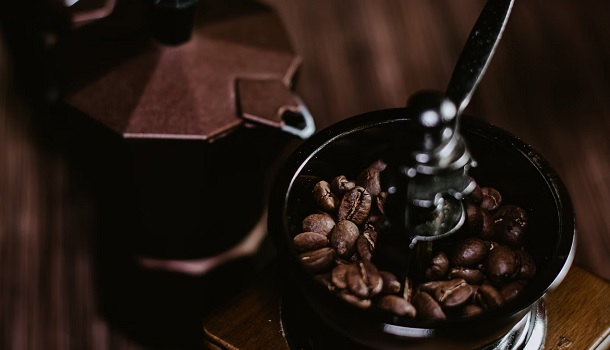

…The Brew Is To Bitter
This is a very common problem while brewing coffee in a Moka pot. The bitterness comes when the coffee gets burned and over-extracted. To avoid this you can try using a bit coarser grind (in case you used a super-fine grind). Also, you can try removing the pot from the stove before the brewing process is over.
…Your Espresso Has A Metalic Flavor?
Now, this is an interesting one. Every Moka pot comes with a factory metal coat that keeps it safe from exterior damages. For this reason, the first 2 to 3 coffee brews taste foul. If you drink them, you will get a very wrong impression of what kind of coffee the stovetop espresso maker provides.
We recommend that you make a few brews using cheap coffee and dispose of them. Clean the pot between every use thoroughly using only mild water and a soft sponge. This will help to remove the coat and ensure you can start using the brewer properly.
…There Are Leaks From The Safety Valve Or The Gap?
In this case, there is simply too much pressure inside the brewer. Remove it from the heat immediately and wait for it to cool down a bit and then check:
- if the grounds inside the filter basket are too finely ground – if they are they can clog the filter. For the same reason, you need to be careful not to tamp the grounds.
- if the rubber seal is in its position
- that the filter basket is not upside down
- how much water you have added into the bottom chamber – you must never cross the safety valve line
Possible Safety Hazards
Generally, Moka pots are made out of food-safe materials and are fairly safe to use. The only thing you want to keep in mind is that the entire pot heats up as you brew coffee. For this reason, you need to be careful while handling the brewer to avoid accidental heat burns.
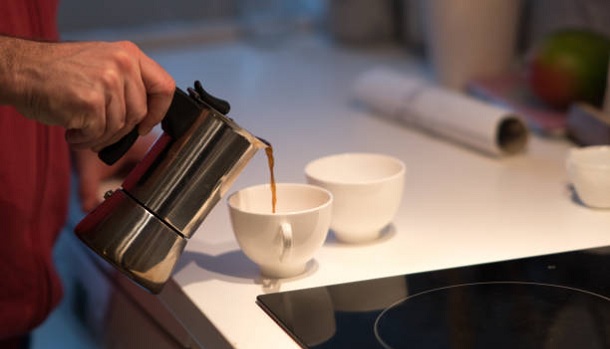

Maintaining The Stovetop Espresso Maker
You need to make sure that your Moka pot or a stovetop espresso maker is always clean. We do not recommend that you clean it in a dishwasher as the machine will damage the aluminum over time. It will oxidize, rust, and turn black and tarnish. You might even notice some alt-like build-ups on the sides of the brewer.
So, the best way to clean your brewer is by using only a soft sponge and some warm water. By using dish soap, you will remove the conditioning that the brewer gets due to the constant use (this is what ensures its great performance). Also, always dry the brewer immediately when you clean it. This is to avoid unwanted water stains and damages such as oxidation.
How To Store The Brewer Safely?
Another thing to keep in mind is that you should not screw the top of the brewer tight onto the bottom when storing it away. This only ages the rubber and you will need to replace it more often.
Replacement Parts – When & Where To Get Them?
While cleaning your espresso brewer, pay attention to the rubber seal and the gasket. What you want to check is if there are any hard build-ups on them or if they are damaged. If this is the case, it is time for replacement parts. In general, you should replace the seal about every 6 months, more often if you use the brewer heavily. The gasket is what keeps the seal in its place, and for this reason, it needs to be in good shape.
You can find these replacement parts on online shops such as Amazon for a price of up to 20 dollars.
To Wrap It Up
That is it. Now you know everything about the stovetop espresso makers including what they are, how they work, how to use them, and finally, how to care for them to ensure that they last you a lifetime. Make sure that you choose the right size of the brewer so it meets your needs perfectly. Once you do this, you will be able to enjoy espresso (Moka) the way the Italians do any time you want.


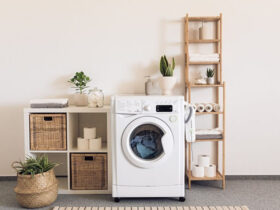

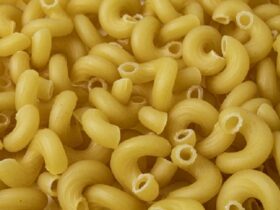



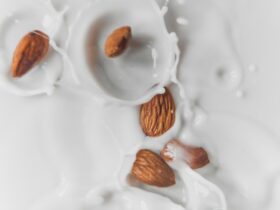



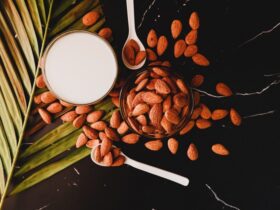






Leave a Reply